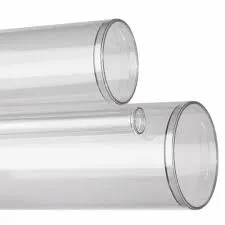Aug . 19, 2024 00:58 Back to list
Understanding Plumbing Pipes and Fittings for Efficient Home Water Systems
Understanding Plumbing Pipes and Fittings A Comprehensive Guide
Plumbing is an essential aspect of modern infrastructure, providing the necessary systems for water transmission and waste disposal. The backbone of any plumbing system consists of pipes and fittings, which are crucial for the effective distribution of water and the removal of wastewater. In this article, we will explore the various types of plumbing pipes and fittings, their uses, advantages, and considerations for installation and maintenance.
Types of Plumbing Pipes
Plumbing pipes come in several materials, each with its unique properties, advantages, and applications. The most common types include
1. PVC (Polyvinyl Chloride) Pipes PVC pipes are lightweight, durable, and resistant to corrosion, making them popular for drain, waste, and vent systems. They are generally easy to install and are available in various sizes. However, they should not be used for hot water lines as they can warp under high temperatures.
2. CPVC (Chlorinated Polyvinyl Chloride) Pipes CPVC pipes are similar to PVC but can withstand higher temperatures, making them suitable for hot water applications. They are also resistant to corrosion and are often used in residential plumbing for both hot and cold water distribution.
3. PEX (Cross-Linked Polyethylene) Pipes PEX has gained popularity due to its flexibility, ease of installation, and resistance to freeze damage. It can be snaked through walls and around corners without the need for fittings, which reduces the risk of leaks. PEX can be used for both hot and cold water lines, but care must be taken regarding UV exposure when stored.
4. Copper Pipes Copper has been used for plumbing for decades because of its durability and resistance to corrosion. It can handle high temperatures and pressures, making it suitable for water supply lines. However, copper is more expensive than plastic alternatives and requires soldering skills for installation, which can increase overall labor costs.
5. Galvanized Steel Pipes Once widely used for water supply lines, galvanized steel pipes are coated with zinc to prevent rusting. They are heavy and can corrode over time, leading to water quality issues. Nowadays, their use is less common due to the availability of more effective materials.
plumbing pipes and fittings

Types of Plumbing Fittings
Fittings are integral components that connect different sections of pipes, allowing for smooth transitions and effective flow control. Common types of fittings include
- Elbows Used to change the direction of the piping, elbows come in various angles, commonly 90 and 45 degrees. - Tees These fittings allow three pipes to connect, creating a T-shaped junction. - Couplings Couplings connect two lengths of the same type of pipe, ensuring a secure joint. - Adapters These fittings are used to connect pipes of different materials or diameters. - Valves Valves control water flow within the system, allowing users to stop or regulate flow as needed.
Installation and Maintenance Considerations
When installing plumbing pipes and fittings, it is crucial to follow local building codes and regulations to ensure safety and compliance. Proper sealing, adequate support, and appropriate fittings are vital to prevent leaks and ensure effective performance.
Regular maintenance is also essential for the longevity of plumbing systems. Homeowners should periodically inspect pipes for signs of wear, corrosion, or leaks, and rectify any issues promptly to avoid more extensive damage.
Conclusion
Understanding plumbing pipes and fittings is critical for anyone involved in building, renovating, or simply maintaining their home. The right selection of materials and fittings can significantly impact the efficiency, durability, and safety of your plumbing system. Whether you choose PVC, PEX, copper, or any other type, each material has its advantages and its place in a well-designed plumbing system. Proper installation and maintenance practices will ensure it serves efficiently for many years to come.
-
PVC Grey Sheet for Extraction: Chemical Resistant & Durable
NewsAug.19,2025
-
Durable PVC Pipe Fittings for Plumbing & Irrigation Needs
NewsAug.18,2025
-
HDPE Steel Belt Reinforced Spiral Corrugated Pipe | High Strength
NewsAug.17,2025
-
HDPE Pipe Fittings: Durable, Leak-Proof Solutions
NewsAug.16,2025
-
Premium CPVC Sheet: High-Temp & Chemical Resistant Solutions
NewsAug.15,2025
-
Durable PPR Pipe for Hot & Cold Water Systems - Easy Install
NewsAug.14,2025

